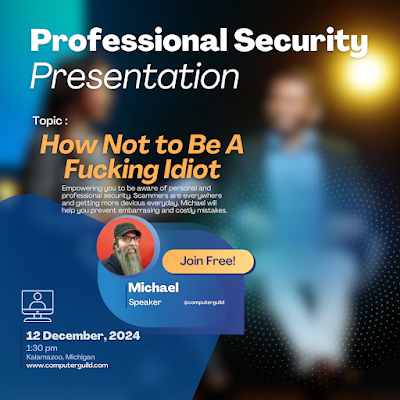"Smiley" The Movie
From The Working Stiffs
Producers of "Money Zombies"
"Smiley" is a horror satire miniseries that introduces audiences to "Smiley," a terrifying yet absurd supernatural entity representing the dark side of forced positivity and superficial happiness. Set in a dystopian world where stress, economic hardship, and relentless hustle culture have driven people to the edge, "Smiley" explores how society’s obsession with “staying positive” becomes a haunting curse.
Plot Synopsis:
In a bleak, corporate-dominated society, mental health is deteriorating, but social media influencers, wellness gurus, and companies enforce a doctrine of relentless positivity. “Smile through it all!” becomes the city’s motto, and everywhere, people are told to “keep smiling” despite the crushing weight of their lives. Stress, burnout, and financial strain are ignored, masked by enforced happiness, and the government even installs “smile mirrors” throughout the city to keep morale up.
But one day, a strange figure begins to appear around town—a ghostly entity in a tight, white bodysuit with a crudely drawn, sinister smiley face. This figure, known only as "Smiley," has a haunting, unnatural laugh that echoes wherever it appears. Smiley’s presence seems to follow those who are struggling the most, appearing out of nowhere in reflections, around corners, or even on their phones.
As Smiley’s influence spreads, people who encounter it experience disturbing changes. First, they start smiling uncontrollably, forced into an eerie, exaggerated grin. Then, laughter overtakes them—hysterical, maniacal, and unstoppable. They lose control, laughing to the point of pain, terror, and eventually madness. People begin to report friends and coworkers laughing themselves to death, their faces locked in unnatural grins.
At first, authorities dismiss these stories as urban legends. But as more and more people fall victim to Smiley, society begins to break down into chaos. News anchors, executives, and influencers all start succumbing to uncontrollable laughter on live broadcasts. The laughter virus spreads like wildfire, consuming neighborhoods, workplaces, and eventually the entire city.
Critique of Forced Positivity: Smiley represents the insidious effects of forced happiness and the pressures of toxic positivity. The story satirizes the idea that people should suppress negative emotions and maintain a façade of happiness at all costs.
Corporate Manipulation: The series critiques how corporations use “positivity” as a tool to control and manipulate people, forcing them to ignore legitimate grievances or hardships.
Mental Health: By turning the “smile” into something terrifying, the series highlights how ignoring mental health issues in favor of superficial happiness can have disastrous effects.
First Encounter: A burnt-out office worker sees Smiley for the first time in their computer screen’s reflection. The figure cackles and vanishes, leaving the worker grinning uncontrollably. The next day, they’re found laughing hysterically in the breakroom, unable to stop.
Influencer Breakdown: An influencer live-streaming a “How to Stay Positive” seminar begins to see Smiley in their camera. At first, they dismiss it, thinking it’s a glitch, but the figure appears closer and closer, causing the influencer to devolve into uncontrollable laughter live, ultimately horrifying viewers.
Corporate Office Collapse: During a motivational speech, a CEO sees Smiley and loses control, grinning in terror as they start laughing hysterically. Soon, the entire audience of employees is infected, collapsing into fits of laughter that ripple through the office.
As the city descends into chaos, the few remaining unaffected people, including a group of mental health advocates and therapists, gather to find a solution. They realize that the only way to rid themselves of Smiley is to confront their own repressed feelings and accept their pain and struggles. They stage an emotional “honesty circle” where, instead of forcing smiles, they embrace their grief, anger, and frustrations openly.
In a final showdown with Smiley, they stand up to the entity and chant, “It’s okay not to smile!” The more they embrace this mantra, the weaker Smiley becomes, flickering and dissipating like smoke. The series ends on a hopeful note as people across the city begin embracing their authentic feelings, though the eerie echo of Smiley’s laughter can still be faintly heard in the background, hinting that the struggle with toxic positivity is far from over.
"Smiley" is a dark, surreal satire with exaggerated, grotesque humor. It combines elements of psychological horror with a darkly comedic, almost absurdist approach, balancing genuine horror with a critique of societal norms. Smiley itself is terrifying in a way that’s both unsettling and slightly ridiculous—its uncanny appearance and maniacal laughter make it a figure of both fear and satire.
The miniseries leaves viewers with a powerful message: the importance of embracing all emotions, both positive and negative, as part of the human experience. It warns against the dangers of suppressing genuine feelings in favor of a façade, showing how forced positivity can eventually lead to a societal breakdown.
“Keep Smiling… or Else.”
In an era where wellness culture is booming and individuals are constantly told to “stay positive,” "Smiley" serves as a hauntingly relevant satire, holding up a mirror to the toxic side of happiness culture. By transforming the smile into an object of horror, the series invites viewers to consider the cost of a world where genuine emotions are dismissed, and to recognize that sometimes, the healthiest thing we can do is embrace a little sadness.


